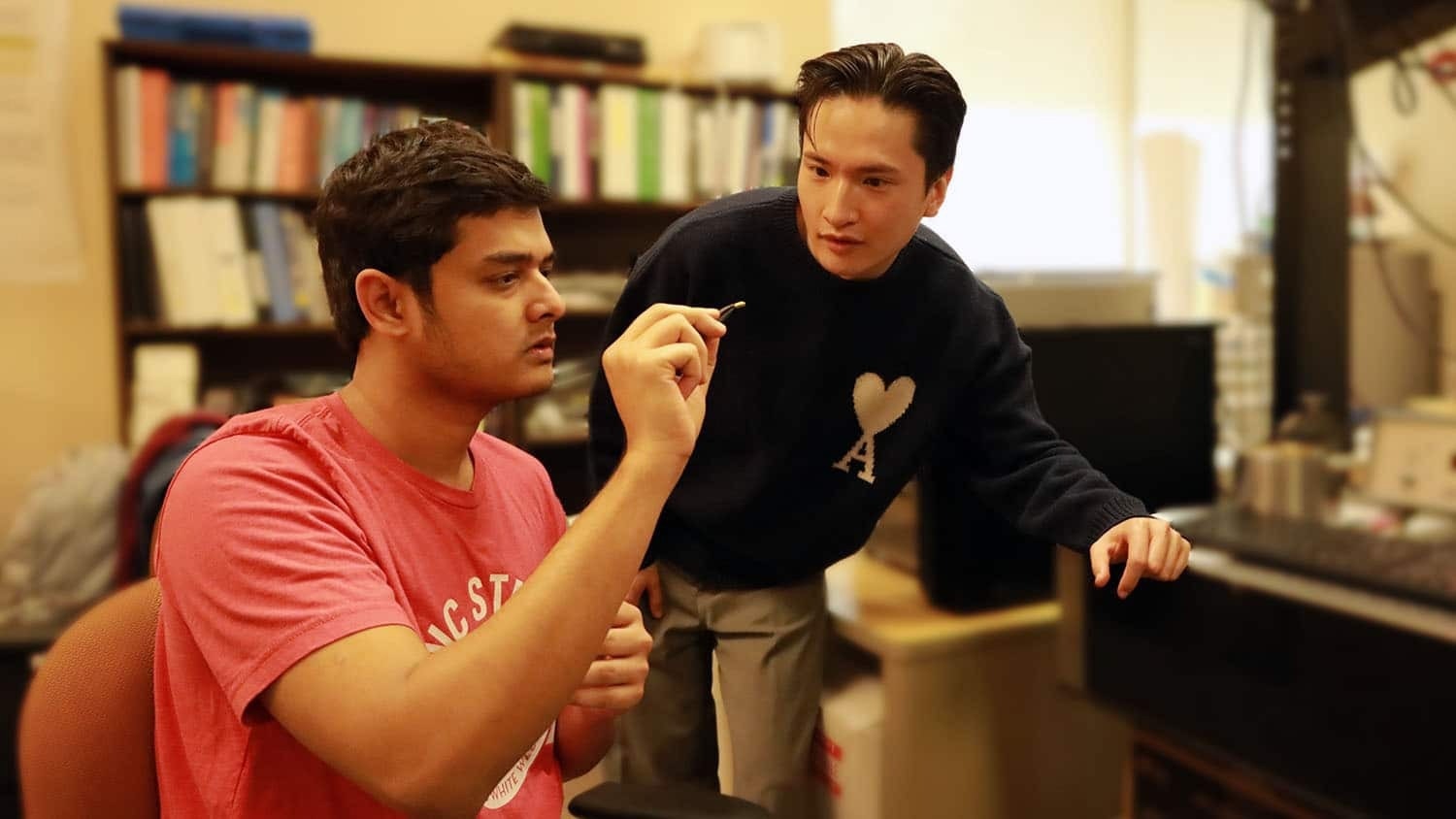North Carolina State University’s new study throws light on how electric fields can be employed to change the thermal properties of ferroelectric materials, enabling engineers to influence the heat flow via materials. From memory storage technologies to ultrasound devices, ferroelectric materials are utilized in a broad range of applications.

Ankit Negi holds a PMN-PT crystal, like those used in the research. Standing with him is study co-author Hwang Pill Kim. Image Credit: North Carolina State University
Our work here is a significant advance because we worked with large sample sizes and provide detailed information on the relationship between the type of electric field being applied to the ferroelectric material and the thermal response in the material. In practical terms, this allows users to tune the thermal behavior of the material by applying different electric fields—using alternating current (AC) or direct current (DC)—which paves the way for developing new techniques for managing the flow of heat through various devices.
Jun Liu, Study Corresponding Author and Associate Professor, Mechanical and Aerospace Engineering, North Carolina State University
For this study, the scientists worked with PMN-PT, a ferroelectric material that is employed in technologies like actuators, sensors, and ultrasound devices. The scientists worked with 2.5-mm-thick samples at room temperature to mimic real-world settings.
Scientists applied electric fields of different strengths to the material with both DC and AC sources for the study. The current frequency and the timespan that the material was exposed to the electric field were the other variables in their testing.
Then, the team employed a suite of approaches to measure how the thermal properties of each sample altered in response to the varying electric field settings.
The scientists discovered that all four variables—the strength of the field, both AC and DC, frequency, and time—served a role in how the electrical field changed the thermal properties of the material.
Having a detailed understanding of how each of the four variables influences the material’s thermal properties gives us a significant amount of control in engineering the material’s thermal behavior.
Ankit Negi, Article First Author and PhD Student, North Carolina State University
We’re hoping to establish a similarly detailed understanding of the relationship between electric fields and thermal characteristics for other ferroelectric materials. And we are open to collaborations on how this work could inform the development of new applications.
Jun Liu, Study Corresponding Author and Associate Professor, Mechanical and Aerospace Engineering, North Carolina State University
The study is published with open access in the journal Advanced Materials. Hwang Pill Kim, a postdoctoral researcher at NC State; Anastasia Timofeeva and Xuanyi Zhang, PhD students at NC State; Yong Zhu, Andrew A. Adams Distinguished Professor of Mechanical and Aerospace Engineering at NC State; Kara Peters, Distinguished Professor of Mechanical and Aerospace Engineering at NC State; Xiaoning Jiang, Dean F. Duncan Distinguished Professor of Mechanical and Aerospace Engineering at NC State; Divine Kumah, associate professor of physics at NC State; and Zilong Hua of Idaho National Laboratory are the co-authors.
The study was supported by the National Science Foundation, under grant number 2011978; from the Office of Naval Research, under grant number N00014-21-1-2058; and through the INL Laboratory Directed Research & Development Program under DOE Idaho Operations Office Contract DE-AC07-05ID14517.
Journal Reference
Negi, A., et al (2023) Ferroelectric Domain Wall Engineering Enabled Thermal Modulation in PMN-PT Single Crystals. Advanced Materials. doi.org/10.1002/adma.202211286.